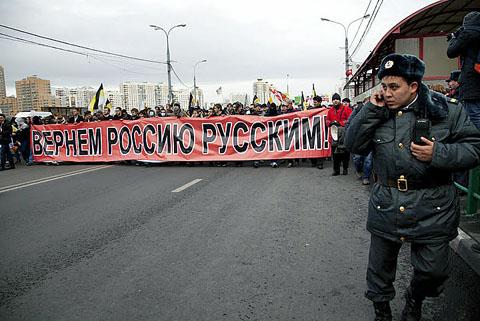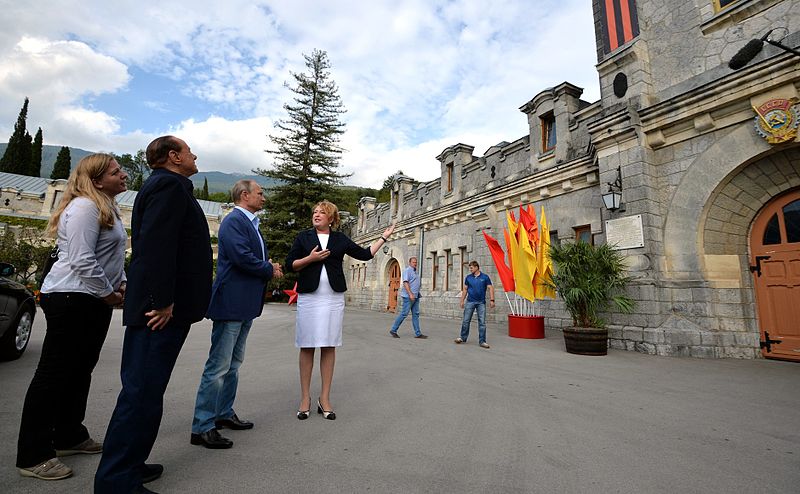Does the Russian nation consist solely of ethnic Russians living within its borders? Or does it also include ethnic Russians outside of Russia? Is it legitimate for the Russian government to exert influence over those countries with sizeable ethnic Russian populations? These questions have been asked for hundreds of years, but they are especially important given current events in former Soviet republics, especially in Ukraine.
In Lost Kingdom: The Quest for Empire and the Making of the Russian Nation, From 1470 to the Present, Serhii Plokhy gathers these centuries-old inquiries under what he calls the “Russian question.” Lost Kingdom both investigates the historical development of this long-standing question and considers the various responses to it over the span of hundreds of years.
Plokhy examines the origins of Russian imperialism and nationalism from the emergence of Kievan Rus in the ninth century, centered around what is today the Ukrainian capital of Kiev, to the occupation of Crimea by Russia in 2014. Plokhy argues that all forms of Russian nationality or nationalism have had to contend with the imperial and cultural legacy of Kievan Rus.
Over the years, Muscovite tsars, Romanov emperors, Soviet general secretaries, and Russian presidents have portrayed themselves as the legitimate heirs and successors to Kievan Rus. They have all tried to align their political, national, and cultural power with this “Lost Kingdom.” Plokhy contends that since the fall of Kievan Rus, the Russian nation has only once fully aligned with the Russian state: during the Soviet Union’s reign as a superpower. Apart from the years spanning 1945 to 1991, Russian governments of all types have constantly struggled both to define who or what is “Russian,” as well as where the political and cultural borders of the Russian nation exist.
Lost Kingdom is a broad narrative of Russian history largely from the perspective of Russo-Ukrainian relations, and to a much lesser extent Belarusian-Russian relations. Plokhy describes the emergence of modern Russian, Ukrainian, and Belarusian identities in the 1800s. After the partitions of Poland in the eighteenth century and the Napoleonic wars of the early nineteenth century, the Russian government turned to historians to bolster their territorial claims. Antiquarians argued that the Russian Empire was the successor of Kievan Rus, and thus that its western provinces, which had been lost to foreign powers centuries before, had always been part of Russia. Thus, they concluded, Ukraine and Belorussia should be integrated into the Russian Empire.

A tripartite Russian identity of Great Russia (Russia), Little Russia (Ukraine), and White Russia (Belarus) emerged in the 1860s in the aftermath of the Crimean War. Ukrainian nationalists insisted on a Ukrainian culture and language distinct from Greater Russia. In Belarus, Russian officials looked for a way to “Russify” many of the Poles in the region during this period: they did so by promoting the White Russian nationality as part of the larger Russian nation.
These policies were often inconsistent. For example, fearing that distinct Russian subcultures would hasten the schism of the Greater Russian nation, the imperial government suppressed Ukrainian-language publications and education from the 1860s through to the 1905 Revolution.
When the Bolsheviks came to power in 1917, they shifted course and implemented policies that promoted separate nationalities under the banner of a large transnational Soviet political identity. Plokhy notes that the creation of the Ukrainian Soviet Socialist Republic led to the heavy promotion of Ukrainian language and culture by the Soviet state in the 1920s.
However, by the 1930s Moscow began to curtail non-Russian nationalism in favor of linguistic and cultural Russification, not only in Ukraine and Belarus, but throughout the Soviet Union. Plokhy argues that this was in part due to fears that Western powers would use nationalism to encourage national minorities to undermine the Soviet state.
Nationalities would continue to receive affirmative action-like advantages in their titular republics. But they would be subordinate to Russian culture and nationality, which became the de facto nationality of the Soviet Union for the remainder of its existence.
Plokhy demonstrates that in the post-Soviet era the idea of the Russian nation continued to change and exert influence. President Vladimir Putin developed his own answer to the “Russian question.” He harkened back to tsarist ideas of Russian nationality and Kievan Rus, asserting that Russians and Ukrainians were ultimately the same people united by similar a language, religion, and culture. This translated into Russian efforts to exert influence over the now-independent Ukraine’s foreign and domestic affairs.

This most recent definition of the Russian nation culminated in the outbreak of war in 2014. Plokhy contextualizes the Russian annexation of the Crimea and support for separatists in the Donbass region in the eastern Ukraine as a retaliatory move by Russia. The land grab came after pro-Russian president Victory Yanokovich was usurped by an anti-Russian government that aspired to closer relations with the European Union.
Readers should be aware that pro-Ukrainian nationalist sentiments are present in the book, but they do not overwhelm or undermine its arguments. Ultimately, Plokhy concludes that the best course for Russia would be to abandon its pursuit of a nation based on ethnicity, religion, language, or culture. Instead, it should pursue a civic-based idea of a nation, like those of the United Kingdom or Germany.
Plokhy does a good job of exploring the nuances of the relationship between Russia and Ukraine over the past several hundred years. He is at his best when he considers Ukrainian and Russian nationalist literature and the influence of the Orthodox and Catholic churches on Russo-Ukrainian relations.
On the other hand, Plokhy pays little attention to Imperial or Soviet policies in the Caucasus, Central Asia, Siberia, or the Far East, where other large and truly non-Russian populations dwelled. Readers might come away with the impression that the Russian Empire and the Soviet Union were made up solely of Russians, Ukrainians, and a few Belarusians. That is a lopsided view of Russian history.
Despite this, Plokhy succeeds in detailing the complexities of Russo-Ukrainian relations over the centuries and making it accessible to any reader interested in these issues. From their common origins in Kievan Rus to their conflict over Crimea, both nations continue to wrestle with the “Russian question.” Knowing the intricacies of the historical relationship between the two countries is necessary to understand the conflict over Crimea and the Donbass. And understanding the long history of Russia’s vigorously contested national idea is vital to all people who want peaceful coexistence with today’s heirs to the “Lost Kingdom.”
